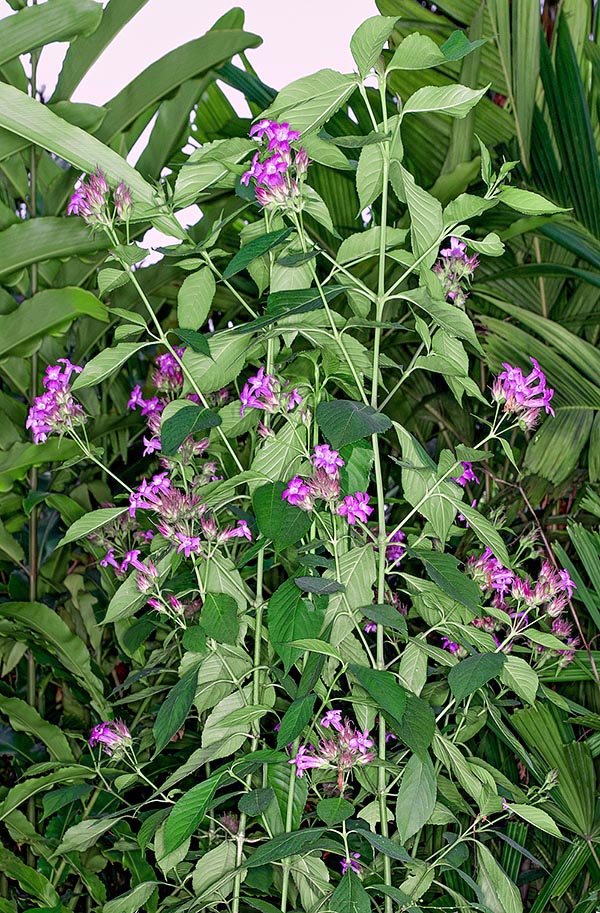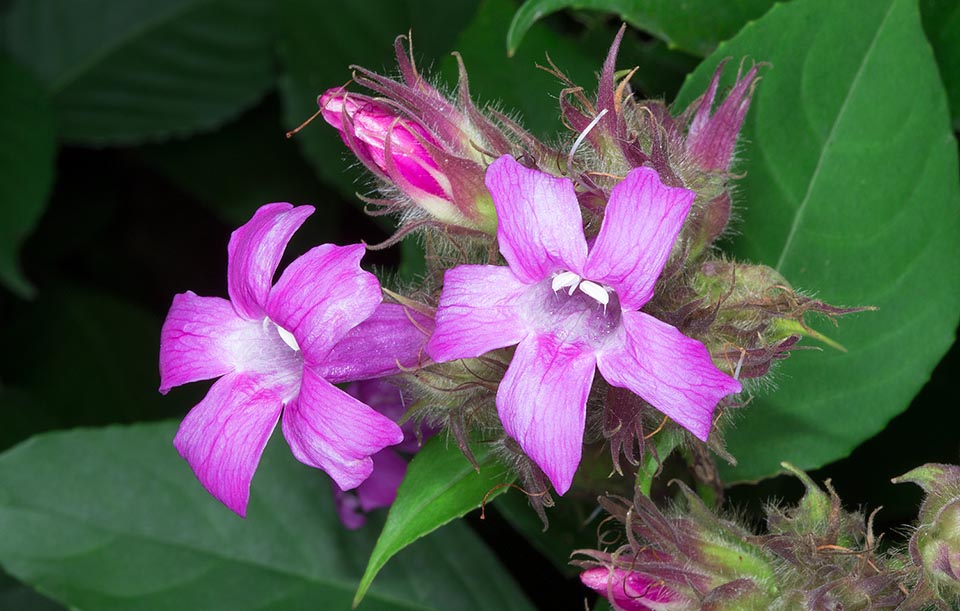Family : Acanthaceae

Text © Pietro Puccio

English translation by Mario Beltramini

Native to Bolivia, the Suessenguthia multisetosa is a 1,5-5 m shrub with long herbaceous branches © Giuseppe Mazza
The genus is dedicated to the German botanist Karl Suessenguth (1893-1955); the name of the species is the combination of the Latin adjectives “multus, a, um” = much, numerous, and “setosus, a, um” = bristly, shaggy, with reference to the hirsute bracts and the lobes of the calyx.
Common names: Bolivian violet, giant Bolivian violet, Columbian petunia (English).
The Suessenguthia multisetosa (Rusby) Wassh. & J.R.I. Wood (2003) is an erect evergreen shrub, 1,5-5 m tall, with long herbaceous branches almost quadrangular, rather frail, and leaves, on short petiole, opposite, simple, ovate with pointed apex and slightly wavy and toothed margin, 15-18 cm long and 5-10 cm broad, of intense green colour and covered by short rigid hairs. Terminal thyrsoid inflorescences with bracts and floral bracteoles ovate with long pointed apex, 1,5-2,5 cm long, of green suffused with purple colour, darker towards the apex, and covered by whitish down. Calyx with green lobes at the base, purple at the apex, 2-3 cm long, and covered by whitish down. Imbutiform corolla of pink colour with lilac veins, with cylindrical basal portion of the tube, about 1 cm long, and of 0,3 cm of diameter, that expands in a throat, 3-4,5 cm long and 1,5-2 cm broad at the apex, with 5 ovate lobes slightly unequal, about 1,5 cm long and 1 cm broad, and 4 didynamous stamens (two longer and two shorter). The fruits are capsules containing discoidal seeds.
It reproduces by seed, in draining loam maintained humid at the temperature of 22-26 °C, and by herbaceous cutting in spring-early summer.
Fast growing species with abundant blooming that extends from late winter to early summer, relatively little diffused, cultivable in the tropical and humid subtropical regions, its cultivation may be tried in the milder temperate-warm ones, where temperatures close to 0 °C are a short lasting exception; it loses the aerial part already between -1 and -2 °C, but usually grows again from the base in spring. It requires an exposition from filtered solar light to slightly shady and well drained soils, rich of organic substance, slightly acidic or neutral, maintained constantly humid. Left free to grow it takes on a rather messy look due to the long and flexible branches that usually need a support, but with appropriate prunings, to be done after blooming, we can obtain a compact posture and contain the height.

Fast growth and rich blooming in the tropical and humid subtropical regions or in temperate-warm ones, where temperatures near 0 °C are a short lasting exception © Giuseppe Mazza
Synonyms: Ruellia multisetosa Rusby (1927).
